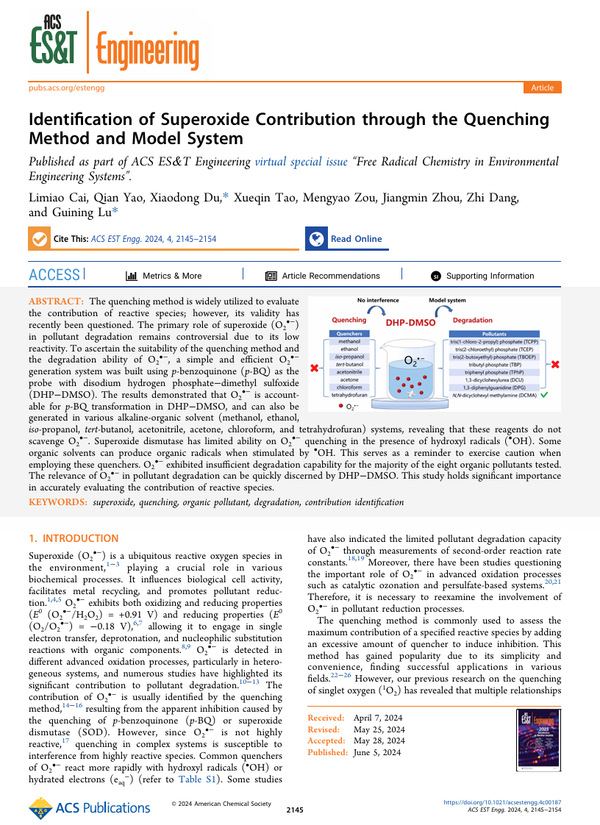【标题】Identification of Superoxide Contribution through the Quenching Method and Model System
【期刊】ACS ES&T Engineering
【第一作者】蔡丽苗
【摘要】The quenching method is widely utilized to evaluate the contribution of reactive species; however, its validity has recently been questioned. The primary role of superoxide (O2•–) in pollutant degradation remains controversial due to its low reactivity. To ascertain the suitability of the quenching method and the degradation ability of O2•–, a simple and efficient O2•– generation system was built using p-benzoquinone (p-BQ) as the probe with disodium hydrogen phosphate–dimethyl sulfoxide (DHP–DMSO). The results demonstrated that O2•– is accountable for p-BQ transformation in DHP–DMSO, and can also be generated in various alkaline-organic solvent (methanol, ethanol, iso-propanol, tert-butanol, acetonitrile, acetone, chloroform, and tetrahydrofuran) systems, revealing that these reagents do not scavenge O2•–. Superoxide dismutase has limited ability on O2•– quenching in the presence of hydroxyl radicals (•OH). Some organic solvents can produce organic radicals when stimulated by •OH. This serves as a reminder to exercise caution when employing these quenchers. O2•– exhibited insufficient degradation capability for the majority of the eight organic pollutants tested. The relevance of O2•– in pollutant degradation can be quickly discerned by DHP–DMSO. This study holds significant importance in accurately evaluating the contribution of reactive species.
【文章链接】https://doi.org/10.1021/acsestengg.4c00187

